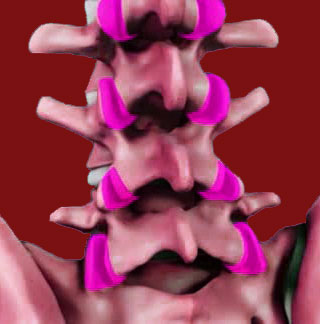
Facet joint nerve ablation techniques can temporarily or even permanently end back or neck pain. Nerve ablation is often used for facet syndrome diagnoses and can be very effective for resolving symptoms that have not responded to more conservative methods of care.
What is nerve ablation and why is it well indicated for facet joint syndrome? What are the advantages of nerve ablation compared to other forms of treatment? More importantly, what are the downsides of nerve ablation therapy and especially, what are the risks?
This essay seeks to explain and explore nerve ablation treatment for facet joint symptoms. We will provide a complete pros and cons analysis of the therapy to help patients make better informed treatment choices.
Facet Joint Nerve Ablation Explained
Nerve ablation is a minimally invasive surgical procedure that seeks to disable a nerve’s ability to signal pain messages. Typically, the duration of effectiveness spans several weeks to several months, although shorter and longer timelines are possible. In some cases, permanent nerve trauma is performed to end pain for good.
There are many different methods of nerve ablation, including the use of heat, extreme cold, energy waves and manual trauma. Radiofrequency, diathermy and cryotherapy are the most often seen clinical practices utilized during modern facet joint surgery.
Nerve ablation is usually reserved for patient case profiles where long timelines of conservative care has failed to resolve symptoms. Additionally, symptoms must be considered significant enough to be disruptive in order to justify the risks of surgical intervention.
Nerve Ablation Benefits for Pain
Nerve ablation has some very good points to consider when being viewed objectively as a dedicated facet joint pain treatment:
The procedure is minimally invasive does not involve significant recovery time.
Nerve ablation can end pain or dramatically reduce it for months at a time in best case scenarios. If effective, the doctor might choose to permanently disable the nerves in subsequent operations to provide lasting relief from pain.
Ablation can minimize a patient’s need for pharmaceutical pain management. Extended use of drug therapies is very hazardous to health and is known to cause many problems for patients that far exceed the facet joint pain itself.
Most major medical insurance plans will cover the financial costs of nerve ablation 100%, making it an easy choice for indicated patients to make when it comes to affording treatment.
Facet Joint Nerve Ablation Risks and Limitations
Nerve ablation might be well indicated for facet joint pain, since the nerves to be treated are small, accessible and relatively insignificant. However, the procedure does demonstrate some risks and limitations that all patients must understand before seeking qualified care:
Nerve ablation is a surgical technique and demonstrates all the usual risks of any invasive care practice, including the possibility of infection, continued bleeding, nerve damage and unsuccessful results.
Virtually all nerve ablation procedures are meant to be temporary in their results. This means that the procedure might have to be performed over and over again in some patient profiles.
Nerve ablation might not work well for some patients, especially when the diagnosis is not correct. In other cases, relief might only be provided for a short time line ranging from days to several weeks. This short time of relief is often not enough to justify subsequent nerve ablation operations.
Nerve ablation is considered optional in virtually all cases, since many patients can achieve similarly good results using a combination of conservative care practices and avoiding surgery all together.
[contentblock id=12]
Facet Joint Pain > Facet Joint Surgery > Facet Joint Nerve Ablation





